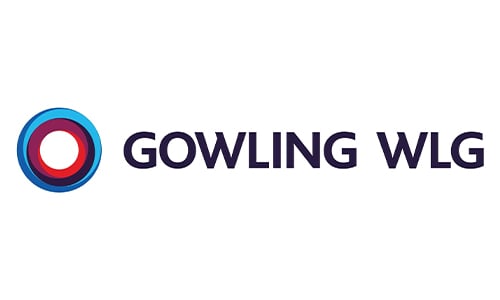The rise, fall, and rise again of cryptocurrencies has been well documented. However, the ramifications of their increasing acceptance are not yet fully clear – a fact that is clearly apparent in the field of commercial lending. Due to the unique nature of digital currencies, they can be used in more innovative and diverse ways than cash or traditional financial instruments. This has led to the advent of crypto-lending, a new financial industry that utilizes these currencies as securities for loans. However, regulation and market structure are not yet fully standardized, making this space a rapidly evolving one for those parties willing to accept its risks. We asked two members of Gowling WLG’s Financial Institutions & Services Group in Canada, David Cohen and Thomas Gertner, to brief us on what crypto-lending is, how it works, and what it means for the future of commercial borrowing and lending.
Crypto-lending: The Future of Commercial Funding?
Commercial crypto-lending is an emerging industry in Canada that sees lenders advance borrowers cash or digital currency (more often than not cash), while taking traditional and not so traditional “security” over cash, digital currency or a combination of the two.
At the heart of this emerging financial space, is a desire of borrowers to have access to immediate liquidity without having to divest digital currency assets, effectively allowing borrowers to satisfy short- and medium-term cash needs, while continuing to have the benefit of potential future market price increases in digital assets.
Given how new this space is, there are not yet market standard structures for these types of loans. In this respect, crypto-lending remains a “wild west” of sorts. The willingness of lenders to take on the risks of being at the forefront of this new market and innovate in developing crypto-loan products goes hand-in-hand with higher interest rates and more aggressive downside protective structures.
In many ways, from a legal perspective, crypto-lending in Canada is reflective of more traditional forms of commercial lending. Crypto Lenders continue to have to take into consideration much of the due diligence that traditional lenders undertake, including considerations under Canada’s anti-money laundering laws, personal property security laws, margining, valuation issues and enforcement issues.
Currency but not Money – Real but Intangible
How to properly take security over digital currency is an issue of particular importance to lenders in this space. Notably, digital currency does not meet the definition of “money” under personal property security legislation, which is restricted to mediums of exchange authorized or adopted by the Parliament of Canada or by a foreign government as part of is currency. As a result the rules for taking security over “money” are not applicable to digital currency.
The current dominant view of practitioners in this industry is that although not meeting the definition of “money” under personal property security legislation, digital currency does fall within the definition of “intangible” property. Accordingly, security can be taken over digital currency in a manner similar to other types of “intangible” property (for example intellectual property). As “intangible” property, security interests over digital currency can be perfected with registrations in the appropriate personal property registries.
However, caution needs to be taken in drafting such registrations, and more broadly in preparing security agreements with respect to digital currency, given the uniqueness of this asset class. For instance, to ensure lenders are properly protected when things like “halving” events occur. A halving event occurs when the reward for mining bitcoin is cut by 50%. This happens about every four years. There have been 3 of these events which has seen a bitcoin block that originally would have contained to 50 BTC be reduced to 25 BTC then 12.5 BTC and is now 6.25 BTC. The next halving should occur in 2024. Obviously, bitcoin digital currency security may factor in these halvings.
From a practical perspective, lenders often need to go above and beyond simply registering under personal property security legislation in order to protect their interests as against digital currency as secured collateral, given the wholly unique and ephemeral nature of digital currency.
Developing Systems for Digital Securities
In addition to ensuring perfection under personal property security legislation by registration, lenders should carefully consider taking two additional steps to ensure proper control over digital currency to avoid the surreptitious transfer of the collateral in a manner that may put it beyond a lender’s reach in an enforcement scenario. Certain lenders have, in an attempt to minimize this risk, developed digital arrangements that achieve results similar to what a more traditional lender would accomplish through a blocked account, lockbox, or deposit account control agreement. This employs a system that allows the lender to monitor and control the ability of a borrower to transfer its collateral during the term of the loans and provides the lender with a means of obtaining sole control and dominion over the collateral in an enforcement scenario.
The necessity of such arrangements, in certain circumstances, may to be counter-balanced and designed around a borrower’s potential need to use some of its collateral prior to the maturity of the underlying loan. In some situations, we’ve seen this balance achieved through the use of margining requirements similar to what one would see when lending against traditional forms of tradeable securities. Margining requirements more broadly may be necessary to protect lender’s against the potential adverse consequences of market fluctuations in the value of its collateral.
This is not a lending model for the inexperienced. It is currently dominated by lenders with a deep knowledge of the operation of digital currency markets who also have digital currency infrastructure and a knowledge base upon which to rely. It is also not a “static” or settled sector. With government regulation and oversight threatening to throttle the digital currency markets creative loan structuring and keeping up with the shifting market trends will be the key to advising effectively on digital currency lending transactions.
***
 David Cohen is the national leader of Gowling WLG's Financial Institutions & Services Group in Canada, and a senior practitioner in the firm's Toronto office. He practises in the areas of corporate and commercial financing and restructuring and insolvency law both domestically and cross-border.
David Cohen is the national leader of Gowling WLG's Financial Institutions & Services Group in Canada, and a senior practitioner in the firm's Toronto office. He practises in the areas of corporate and commercial financing and restructuring and insolvency law both domestically and cross-border.
For many years, David has been consistently recognized as a leader in the area of Restructuring/Insolvency – Canada in Chambers Global: The World's Leading Lawyers for Business and Chambers Canada. He has also been listed by Lexpert as a leading lawyer in mining (2017/18/19) and debt financing and banking and Legal 500 for debt financing.
David is both the past global chair (2017) and past global president (2016) of the Turnaround Management Association (TMA),
David was the chair of the Canadian Bar Association's National Bankruptcy and Insolvency Section Executive for a two-year term ending in September 2004. Before that, he was the Ontario representative of the section from 1998-2002.
***
T homas Gertner is a senior associate in Gowling WLG's Toronto office, practising in the firm's Financial Institutions & Services Group. His practice focuses on a broad range of commercial matters, with an emphasis on banking and insolvency law.
homas Gertner is a senior associate in Gowling WLG's Toronto office, practising in the firm's Financial Institutions & Services Group. His practice focuses on a broad range of commercial matters, with an emphasis on banking and insolvency law.
Thomas is a graduate of the joint JD/MBA program at Osgoode Hall Law School and the Schulich School of Business.





